American and European pilots can plan a trip across the continent with surprising ease and with great support from air traffic controllers, airport operators, and businesses that serve aviation. No one stops you to ask what you’re doing. You probably question why I even bother to write this because it’s so well understood.
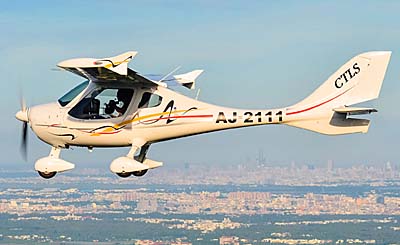 Yes, those of us in countries where private aviation is well-established take for granted the privilege of flying cross country. In fact, it’s one of the great joys we love to experience. It’s a fantastic way to see the country. That’s simply doesn’t happen in China. …Or, it didn’t. Things are changing and one company has forged ahead despite the challenges.
Yes, those of us in countries where private aviation is well-established take for granted the privilege of flying cross country. In fact, it’s one of the great joys we love to experience. It’s a fantastic way to see the country. That’s simply doesn’t happen in China. …Or, it didn’t. Things are changing and one company has forged ahead despite the challenges.
This story involves a Taiwanese-origin, China-based company called AeroJones and involves the delivery of one of their CTLS aircraft to a customer. In the USA, this would never be news. In China, it most definitely is!
AeroJones’ Great Aerial Trek
After purchasing the rights, AeroJones builds the Flight Design CTLS for the Asia-Pacific market. Americans have seen AeroJones as it filled in when Flight Design in Germany went through a government-imposed restructuring in 2015.
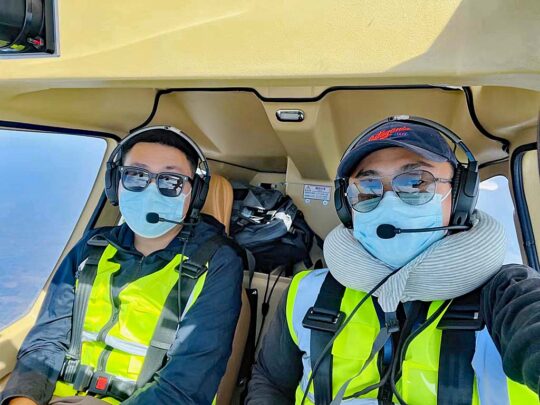
Pilots Wu Zhuo and Hu Shaokang flew the CTLS on its 1,500 kilometer record-setting ferry flight.
For several years, all the company’s deliveries inside China have been done by ground vehicle, reassembling the packed aircraft and test flying at the site of the customer. China rules are tight enough that cross country is really not possible except for business aircraft and military. Can you imagine Cirrus delivering their new aircraft to customers by truck? No, neither can I, yet that’s what AeroJones has had to do for years.
So, it’s a big deal to get permission to deliver an aircraft by air. Here’s the company’s story. Errors in computer translation are likely but I’ve attempted to help an interesting story come to life.
Zhenjiang to Chongqing
The Story Behind the “Record”
Part 1 — Determination of delivery plan
The travel from Zhenjiang to Chongqing involves 1,500-kilometers (932 statute miles, a flight roughly matching Chicago to Denver in both distance and terrain). In the past, such long-distance deliveries were carried out by land transportation, and after arriving at the destination, it was necessary to reassemble and test fly each aircraft and afterward process relevant official documents. This took a long time and was inefficient.
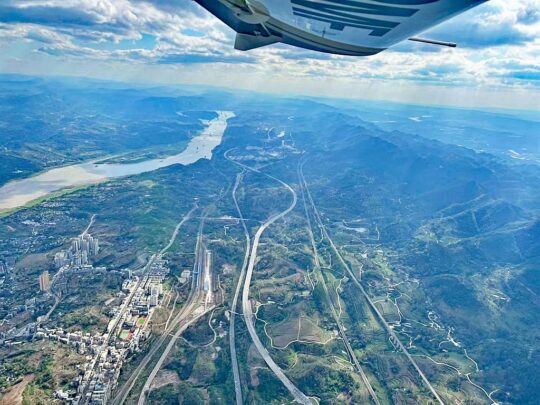
The first part of the ferry flight encountered headwinds but fewer terrain challenges.
“Do you want us to try to prepare the machine for flight to Chongqing this time,” the pilot team asked?” They have the skills and can plan the flight. It will make delivery so much easier (than by truck shipment). “The flight distance is much shorter (than driving) and the performance of the CTLS aircraft is capable of this flight. We can do it!”
Weixiang Aviation never flew one of their aircraft to Chongqing. “Such a long distance and flight duration have never been seen in the history of Weixiang,” noted the comany. Which route should they fly? Which airport should we use for a fuel stop? How can we get the right fuel? How do we coordinate parking overnight at an unfamiliar transit airport? These tasks, commonplace for American pilots, were each new challenges to be overcome. Airport providers of those services have no experience with small aircraft like CTLS so it was a learning experience on both sides.
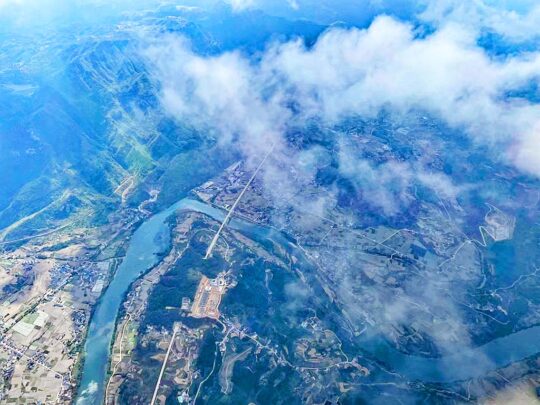
Clouds encroached on the flight path at times but controllers worked with the pilots… even though those controllers had no experience with light aircraft like CTLS.
2. A time challenge also emerged.
“We need to deliver this aircraft to the customer by October 1st,” the team realized. How can we best meet the customer’s needs? Can we customize a plan? We must pick routes and start immediately. Plus we must prepare Plan B: land delivery. Although we don’t want to repeat this method, we must be prepared.
Time was tight and the task was heavy. “The biggest difficulty in this adjustment is the long distance, which needs to be carried out in stages,” said Li Can, head of aviation affairs at Weixiang Aviation. “The terrain in the second half is complicated,” he added, referring to a high mountain range.
In addition, the CTLS prefers No. 95 gasoline (premium auto fuel). Since this is different from the fuel used by general aircraft, the problem of refueling must also be taken into account. Wuhan Hainan General Airport offered better choices and was located at about the halfway point. of the flight. Americans will recognize the name Wuhan, made infamous in connection with Covid.
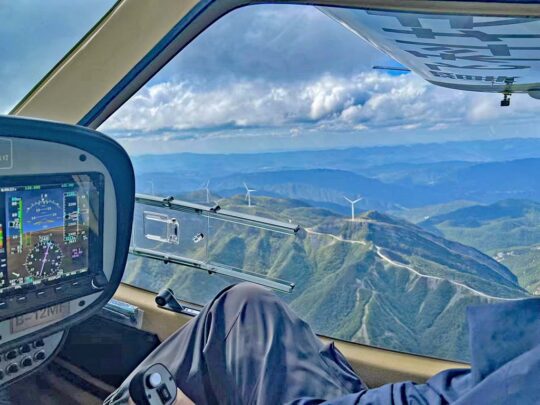
Headwinds dropped at the flight progressed but then higher, less hospitable terrain arrived.
3. The range of choices got smaller
Unfortunately, the team had to plan for possible suspension of activities at Wuhan Hannan airport, so all the planning had to be restarted. The choices are more limited without Wuhan considering weather and terrain and the needs of aircraft performance, supporting airport facilities, air traffic control permission, and other factors.
4. “Fortunately, the plan passed successfully
When applying for a flight plan coincided with the eve of a holiday, and fearing that uncontrollable factors would affect the flight plan, the team continued to proceed simultaneously with the application for flight plan and prepare alternative plans for land transportation in case new flight plans were not approved (permission must be obtained more than 48 hours before the flight in China, further challenging the planning). “Fortunately, our application for original and alternate flight plans were successfully approved, and the flight could begin.”
Part 2 — “The test of the aircraft is much higher than the test of the pilot”
1. The longest distance and the highest flight altitude
Pilots Wu Zhuo and Hu Shaokang have considerable experience flying CTLS. “This is the longest flight I have flown in CTLS: 1500 kilometers, 12 hours, and altitude of 2,700 meters (about 9,000 feet; well above altitudes commonly assigned to non-business aircraft). These are regarded as a new record for China light aviation.
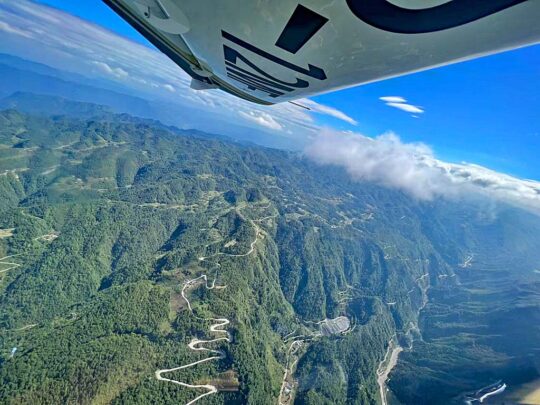
The last half of the flight had to pass over some mountainous terrain with few landing possibilities.
2. En route challenges
“The firsts half the long flight encountered strong headwinds of up to 28 knots. This lowered ground speed and burned more fuel so the pilots considered a diversion to Xiantao Airport. Fortunately, higher altitude winds reduced so fuel was sufficient, and they were able to reach their original destination safely. After landing, they checked to find only backup fuel remaining. “We were quite lucky the winds reduced.”
3, How smooth the first half; how thrilling the second half
Jingmen to Chongqing, the first half, had very smooth conditions. However, after crossing Zhangjiajie, clouds increased. We were then flying at about 2,400 meters (7,800 feet). Clouds threatened our forward visibility and because our aircraft is operated under visual flight references (VFR), we had to proceed carefully.
As the destination neared Chongqing, terrain became mountainous (nearby images) and that terrain offered fewer landing spots. “At our minimum safe altitude, mountain winds produced moderate to rough turbulence during the flight. “We had to ask our air traffic controller for a high altitude, up to 2,700 meters.”
4. Questions encountered along the way
“We passed through a lot of control areas and often changed air traffic control. The local controller often asked what type of aircraft we were flying. Is it a helicopter? Does it have any instrumentation and so on? Controllers have relatively little experience in flight support for Light-Sport Aircraft flying such long cross country flights.”
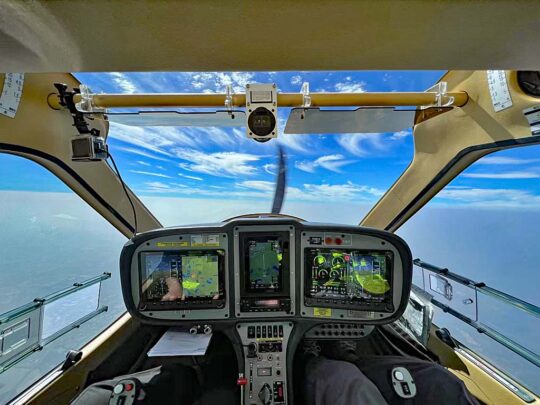
The pilots were pleased with AeroJones CTLS performance and capabilities for cross country flying in a variety of conditions and over varying terrain.
5. Test of the aircraft versus test of the pilot
“A first flight like this is a test of both people and planes.” Just like the degree of turbulence encountered in this flight, the test of the aircraft is actually greater than the test of the pilot. Most of the difficulties can be overcome by an experienced pilot, but the performance of the aircraft is relatively fixed. Only a reliable aircraft can withstand such a test. Given the flight length, interior space and comfort are important as is avionics equipment. “This flight brought a new understanding of our aircraft and we confirmed Light-Sport Aircraft performance is excellent.”
Part 3 — “Interesting Episodes”
1. “Can I go to Chongqing with the plane?”
After arriving at the transit airport, Wuhan Zhanghe Airport, an airport staff member learned that the destination of the ferry flight was Chongqing, and he asked to join the flight, probably thinking we had extra seats.
2. “We flew the plane ourselves, there is no flight number”
After arriving at the hotel in Chongqing, the hotel routinely asked the pilot about the transportation method to Chongqing. “We came by plane. We don’t have a (airline) flight number. We flew our own plane and can give you our tail number.” The hotel staff, not really understanding what type aircraft we had flown, reluctantly registered the number of the CTLS.
Behind the creation of such a China record is the efforts of a group of people. The ferry team thanks the major military and civil aviation control units that provided support for this flight transfer, those who helped us explain such a ferry flight, and the whole team who deserves recognition in making this first-of-a-kind flight take place.
The story of CTLS is still being written, and more records are waiting to be created.
This short video, although using a language few viewers may understand, offers glimpses of flying over China. From a Light-Sport Aircraft, these are very rare scenes. Aircraft other than military and airline simply don’t get permission for cross country flights… but things are changing. Enjoy the views, compliments of AeroJones.



Dan, Is the CT registered in Taiwan or China? Which country is it made in? Hard to imagine a Taiwanese plane being allowed in Chinese airspace or being bought by Chinese customer. This delivery by air is most inspiring.Ed
The aircraft is registered in China, operated by Chinese licensed pilots, following Chinese rules and protocol. The impetus behind the company are people from Taiwan, but they do business in China, as do many other such companies. AeroJones has since been allowed to make additional deliveries by air, for them a very significant step forward.
The opening of China?
Reminds me of the cultural revolution that took place there a number of years ago.
I wish that I could live long enough to see how all of this unfolds.
Litefoot
Certainly this is not the end of the story. It will be fascinating to watch.
I doubt highly this will turn out favorable to America or the world. That’s certainly not the grand plan in China.
Disappointing to see how deeply China has embedded into GA. They own WAY too much now.
While Chinese companies have indeed bought leading American brands such as Cirrus, Continental Motors, and Icon, AeroJones is its own company and acquired their rights by contract. This company was founded by people from Taiwan and they have built their own enterprise.
That is good at least for as long as Taiwan gets to be sovereign. I think they got Diamond too sadly didn’t they?
Yes, Diamond, too, but all these western companies willingly took Chinese investment. AeroJones is at least an independent company that properly licensed rights from a western company.
No doubt it was willingly but terribly shortsighted. Personally sad to see another American company lost to China.